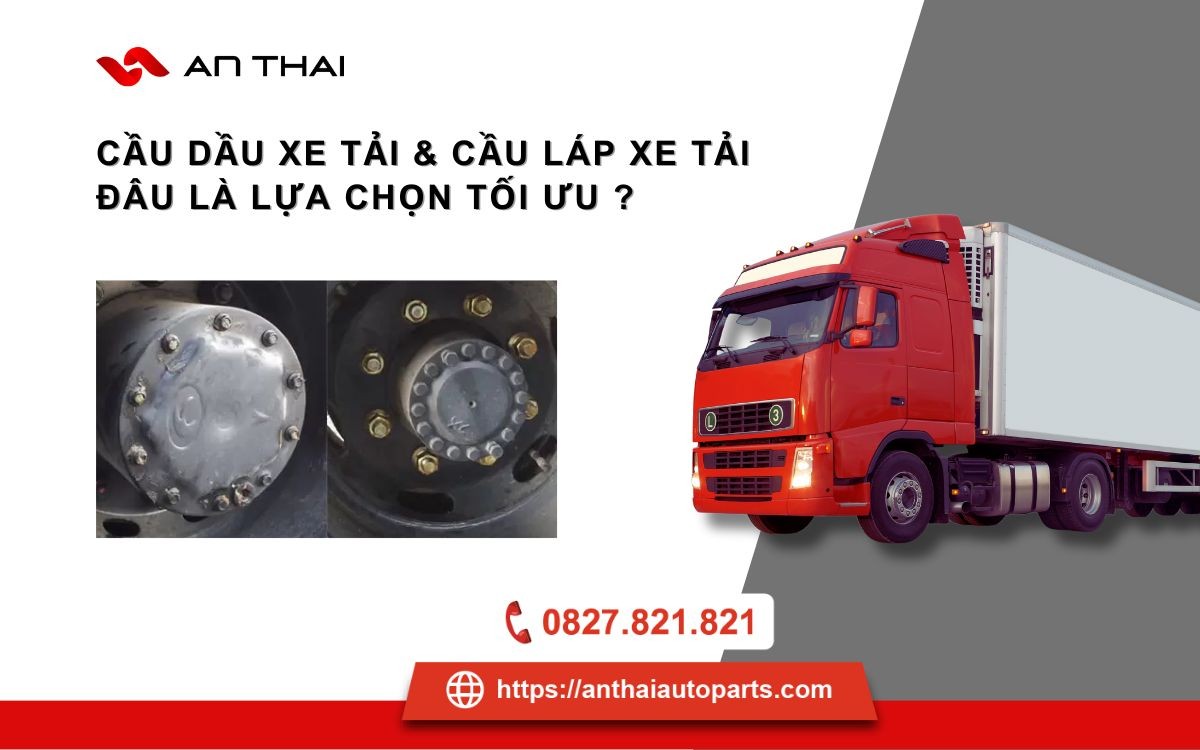Trucks are vital for logistics. Understanding truck components, especially axle systems, helps users choose the right vehicle. This article by Xe Tải Mỹ Đình distinguishes between heavy and light trucks based on oil bath (wet) and dry axles.
 Close-up of a truck oil bath axle
Close-up of a truck oil bath axle
Oil Bath vs. Dry Axles: An Overview
Oil Bath Axle (Wet Axle): This axle type has drivetrain components operating in an oil bath. Typically used for heavy-duty trucks, semi-trucks, and vehicles carrying bulky goods, requiring high load capacity. Oil lubrication reduces friction, protects internal parts, and enhances durability and load-bearing capability.
Dry Axle: Dry axles feature direct drive with components lubricated periodically, not immersed in oil. Commonly found in light and medium-duty trucks, suitable for urban transport or flat roads. Their simple structure and lighter weight improve fuel efficiency.
Distinguishing Oil Bath and Dry Axles in Trucks
To better understand the differences, we’ll compare oil bath and dry axles based on these criteria:
Structure and Operating Principle
- Oil Bath Axle: Drivetrain components like gears and shafts operate in oil, reducing friction and protecting parts. This system ensures smooth and durable operation, especially for heavy trucks in continuous or long-haul operations.
- Dry Axle: The drivetrain is periodically lubricated, with direct drive shafts and a simpler structure, reducing vehicle weight for better fuel economy.
Load Capacity and Applications
- Oil Bath Axle: High load capacity, used in heavy-duty trucks carrying large volumes of goods, suitable for long-distance transport and challenging terrains.
- Dry Axle: Suitable for light and medium-duty trucks carrying small to medium volumes, ideal for urban and flat road conditions.
Pros and Cons
Oil Bath Axle
- Pros: High load capacity, reduces friction, increases durability, excellent protection for internal components.
- Cons: Higher maintenance costs, higher fuel consumption.
Dry Axle
- Pros: Fuel-efficient, lower maintenance costs, suitable for light and medium-duty trucks.
- Cons: Lower load capacity than oil bath axles, not suitable for long hauls or complex terrains.
Choosing the Right Axle
- Choose Oil Bath Axle: If frequently transporting heavy loads, traveling long distances, or navigating hilly terrain.
- Choose Dry Axle: If the truck primarily operates in urban areas, carrying light to medium loads.
Usage Notes
- Oil Bath Axle: Change oil regularly to ensure optimal drivetrain performance.
- Dry Axle: Regularly inspect shafts and gears, ensuring adequate lubrication.
- Ensure the vehicle operates within its permitted load capacity to extend axle life. Choose the correct axle type for the terrain and transportation routes.
